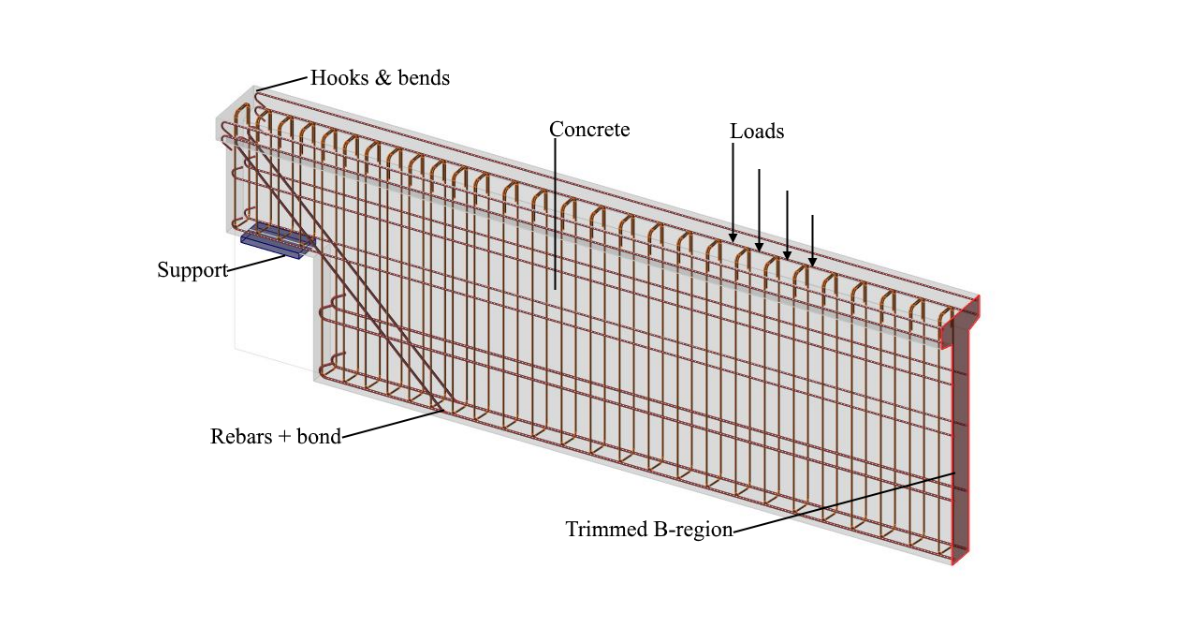Introducción a la aplicación de elementos finitos
El CSFM considera campos de tensión continuos en el hormigón (elementos finitos 2D), complementados por elementos discretos de "varilla" que representan la armadura (elementos finitos 1D). Por lo tanto, la armadura no se incrusta difusamente en los elementos finitos 2D del hormigón, sino que se modela explícitamente y se conecta a ellos. En el modelo de cálculo se considera un estado de tensiones plano.
\[ \textsf{\textit{footnotesize{Fig. 6\qquad Visualización del modelo de cálculo de un elemento estructural (viga recortada) en Idea StatiCa Detail.}}]
Se pueden modelizar tanto muros y vigas enteras, como detalles (partes) de vigas (región de discontinuidad aislada, también llamada extremo recortado). En el caso de muros y vigas enteras, los apoyos deben definirse de tal manera que resulte una estructura (externamente) isostática (estáticamente determinada) o hiperestática (estáticamente indeterminada). La transferencia de carga en los extremos recortados de las vigas se introduce mediante una zona de transferencia especial de Saint-Venant, que garantiza una distribución de tensiones realista en la región de detalle analizada.



